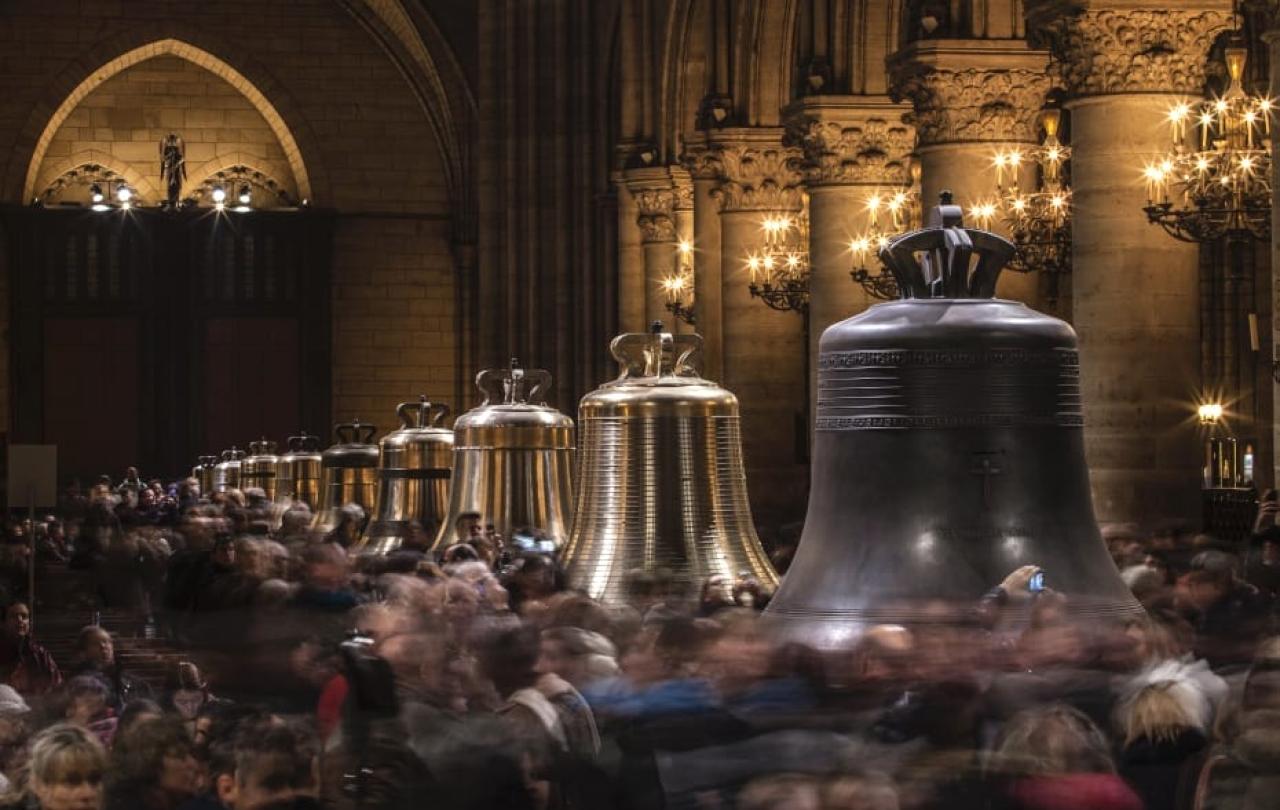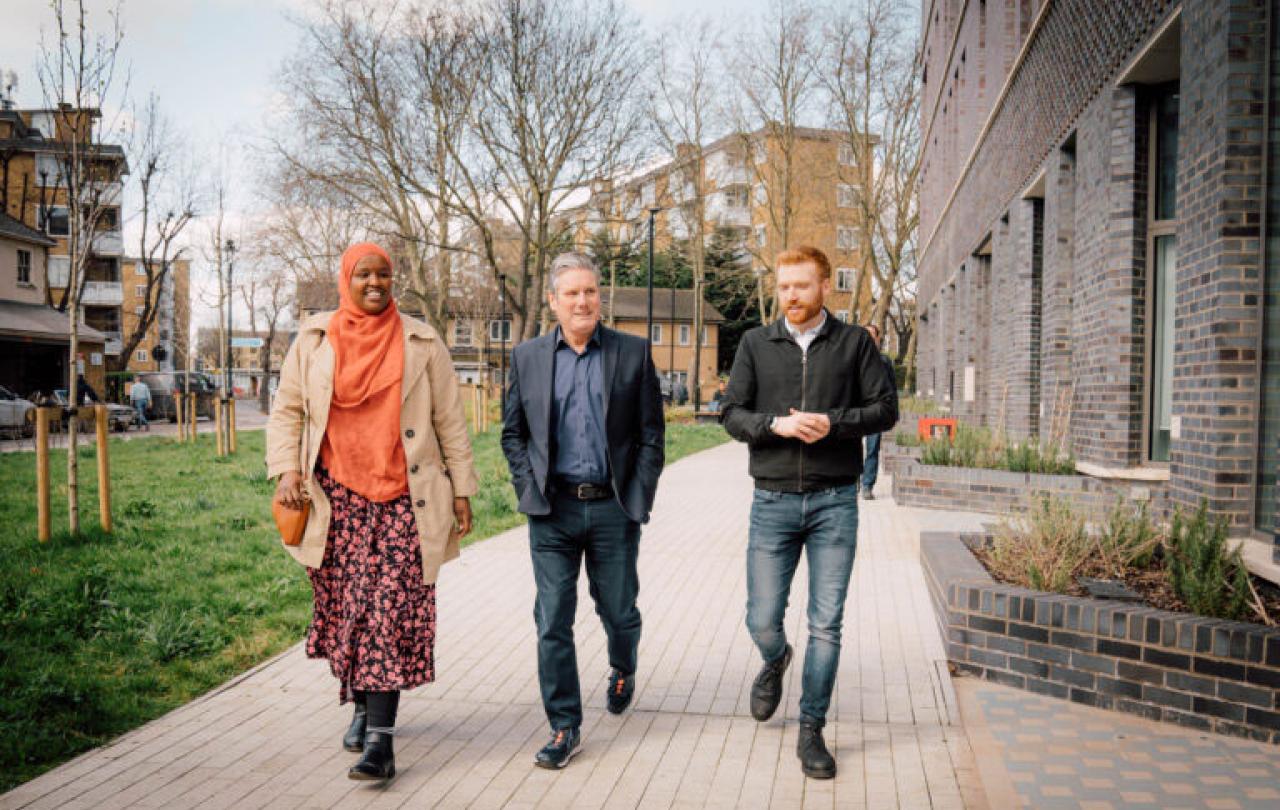
The jackdaws flap and caw as they come in to roost. The sun sets behind the bare trees; its fiery farewell doing nothing to warm the cold air. The village church bell rings out 4pm. My young daughter stops what she is doing, says “ding dong”, then carries on. That’s what we all used to do: stop what we were doing and be called to something else, the bell’s rhythmic tolls cutting through our individuality and unifying us for a time. Perhaps we would go to church, or stop to pray, or remember the dead for whom the bell tolled. I have been thinking about that often-quoted poem by John Donne:
No man is an island,
Entire of itself.
Each is a piece of the continent,
A part of the main.
If a clod be washed away by the sea,
Europe is the less.
As well as if a promontory were.
As well as if a manor of thine own
Or of thine friend's were.
Each man's death diminishes me,
For I am involved in mankind.
Therefore, send not to know
For whom the bell tolls,
It tolls for thee.
Now, church bells ring out the hours of the clock, and occasionally still ring out mourning and celebration too. They seem also to ring out a quaintness, a nostalgia, a past that is slipping away. I have been sitting by the old stone church listening to them, wondering what else they might be tolling for, what else might be slipping away. In Donne’s poem, he says the bell tolls not for them, but for us, because we are all connected. Each person’s death diminishes the whole from which they were a part, and so diminishes me. The bells used to remind us of that whole.
The bell could be melancholy but I notice how it tilts me toward hope, even in this deep winter stillness; an audible distillation of light ringing through the dimness. I think it is the hope of mankind which Donne tells me I am involved in. These old bells seem to ring defiantly despite the many other chimes that ring just for me: digital pings, messages, notifications, news, an algorithm that tried to force me down my own lone path. But echoes of communal life persist. Now, I hear the bell say:
Ding: listen
Dong: lift your head
Ding: look
Dong: life is a whole
Ding: face each other
Dong: this is the only way we will meet the future
A few days later, my daughter and I step into the village hall. We surface together from evening darkness into the light of song: it is the carol concert, we are late, and the music is about to start. The singers are decked in lights and earthy greens and rusty reds. They are a group from Exmoor who conserve and share traditional and local songs, as well as singing the songs we all recognise. My daughter’s cheeks are pink, her eyes blaze with delight. In a few days, the solstice will be here, and the earth will pause in its movement before turning back to face the light. Here in this old hall, the songs seem to reach towards that coming light: we are here, we are together, and we choose to lift our individual voices as one chorus of community.
I think about the people in this hall gathering to mark other things — memories, celebrations, vision, care — and I wonder about the more figurative bells that draw them together to do so. What are the bells that keep us together now, when so much encourages us into isolation and individualism? — The bells that remind us we can never be the islands that we are so often encouraged to be: independent, tough, believing consumption will heal us, packaged into a personal brand; everything encouraging us to be seen, not known.
I try to listen for these bells, to hear how to inhabit time reverently and with reciprocity, not with urgency and isolation. In many places the actual church bells are silent, but I think we still need the bells of communality: bells that call us into share rhythms, reminding us to pause in our individual movement, reminding us to gather, to mourn, to remember things and find the light and the hope in each other, just as the tilting of the earth pauses at the solstice before it turns to face the light.
Nature’s cycle is one way of doing this: tuning in to the turn of the year that makes new life possible. The solstice and equinox; wassailing in January to bless the apple trees; noticing when migrating birds appear or leave; sharing planting and harvesting days. Liturgical calendars are a way that Christian communities kept and still keep time: advent, Christmas, lent, Easter. These rhythms become familiar, reminding us that time isn’t linear, much as the myth of infinite progress would have us believe otherwise. Time is cyclical, expanding and contracting; old events revisited regularly in new ways.
Knowing that it is not just me looking at these stars, but people across the world and through time, brings me into a peace, a reverence that can be hard to come by.
And there are other things that can bring us together too: causes, hobbies, interests, protests. These can take on the role of bells perhaps, drawing us together around shared purpose – but shared purpose and shared existence, shared being, are not always the same thing.
Perhaps we need new rhythms if we are to meet the world as it is today. Imagine if a bell tolled — literally or figuratively — not just for human funerals, but whenever a species went extinct, or a tree cut down. Imagine if neighbourhoods gathered to light candles and share stories and soul and care each week, offering a space that church used to provide to lots of people through the ages. And what if we resurrected old traditions for a new age: ‘beating the bounds’ as a way to mark not just the boundaries of land but the places that need restoring and regenerating now; harvest festivals not just as something for school children and rural churches, but as a way we can better connect with food and farming. What if we looked at old wisdom; the way the church calendar aligned with the farming calendar, asking us to remember that food and the soil it comes from are sacred things.
Our friends were near the beach in Costa Rica. They noticed that at the end of the day, everyone stopped what they were doing — fishing, fixing, working — and watched the sunset. This moment of beauty seemed to bring people together into synchronicity. In his book Awe: The Transformative Power of Everyday Wonder, scientist Dacher Keltner shows us how experiencing awe can, amongst other things, help us to experience humanity, see patterns in life, and better collaborate with each other. He says: “The last pillar of the default self—striving for competitive advantage, registered in a stinginess toward giving away possessions and time—crumbles during awe. Awe awakens the better angels of our nature.” Perhaps putting ourselves in the way of awe might help us hear the bells — old and new — that ring in this current age, and that might bring us together and love each other well. If love only exists in relationship, and love is what helps us to see and to care, then protecting and restoring relationship seems to be vital work for our time.
Now, the winter sky is dark and the stars shine brightly above. They shine with a clarity that matches the peal of the bells in the village. They call me beyond myself into something unified, something older, something necessary. They call me into wonder and awe. Knowing that it is not just me looking at these stars, but people across the world and through time, brings me into a peace, a reverence that can be hard to come by. I step back into the house but my mind faces outwards into the world.
Church bells used to call people together to worship, bringing a sense of shared time and purpose. They still ring, but they can be hard to hear against the noise of individual time. I think they are calling us together again now. And if we can’t hear them, perhaps we need to set new bells ringing. May the bells that ring this New Year’s Day inspire us to do so.
Join with us - Behind the Seen
Seen & Unseen is free for everyone and is made possible through the generosity of our amazing community of supporters.
If you’re enjoying Seen & Unseen, would you consider making a gift towards our work?
Alongside other benefits (book discounts etc.), you’ll receive an extra fortnightly email from me sharing what I’m reading and my reflections on the ideas that are shaping our times.
Graham Tomlin
Editor-in-Chief





